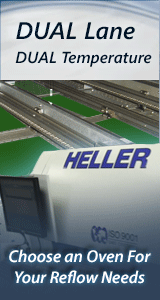Welcome to RoHS. Or, at least, to the version of RoHS that I've had to deal with since I started with my current company.
Blowholes and pinholes seem to be common in PB-free manufacturing. At least, they have for me here. I also note that IPC has listed some anomalies in pb-free assembling that most of us would have thought previously rejectable conditions. Check out the 610D for lead free solder joint differences.
We are using SN100 solder, and have experienced a higher rate of blowholes. We've been soldering with a static pot, and haven't found much to resolve our issues. I've recently purchased a pb-free wave machine, and am hoping I can address the issues there with different heating/fluxing capabilities, as well as an active wave rather than a static pot.
One thing that seemed to improve blow-hole creation for us was board finish. White-tin and tin-immersion finishes seemed to cause a lot of problems in our process, while ENIG finishes reduced a lot of those problems. I know that with white-tin finishes, the boards must be given an alcohol bath before processing; it's the only thing we've been able to find that improves soldering.
In surface mount soldering, we've observed a higher rate of mis-aligned parts. This is due, in part, to the shorter TAL during reflow. And, apparently, a difference in surface tension during reflow. The parts do not center themselves nearly as well as they do with regular tin-lead solder. How to fix this issue? Make sure your machines are placing the parts as close to dead-nuts center as possible. Since the pb-free paste/reflow won't center the parts as well as tin-lead did, less slop is allowable during smt placement.
cheers ..rob
reply »
![]() Hello All,
I am working with a Mid Sized PCBA Manufacture...
- Apr 13, 2007
by
scunneen
Hello All,
I am working with a Mid Sized PCBA Manufacture...
- Apr 13, 2007
by
scunneen
![]()
![]()
![]() We have already started to ship ROHS products to our custome...
- Apr 13, 2007
by
We have already started to ship ROHS products to our custome...
- Apr 13, 2007
by
![]()
![]() Check with your PCB supplier who the manufacturer of your I-...
- Apr 18, 2007
by
Check with your PCB supplier who the manufacturer of your I-...
- Apr 18, 2007
by
![]()
![]() Welcome to RoHS. Or, at least, to the version of RoHS that ...
- Apr 19, 2007
by
robgd3
Welcome to RoHS. Or, at least, to the version of RoHS that ...
- Apr 19, 2007
by
robgd3
![]()







